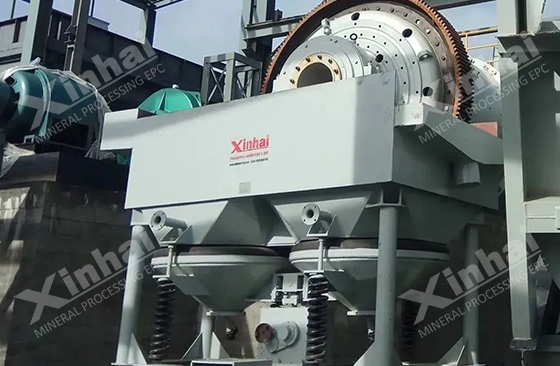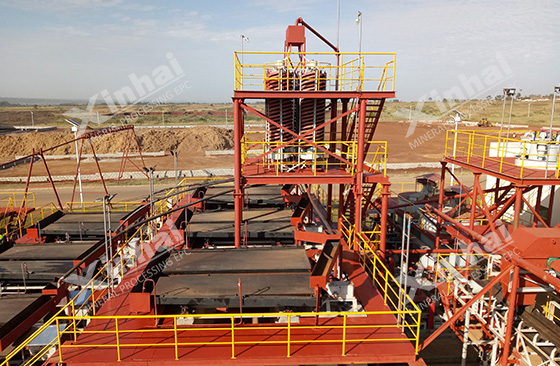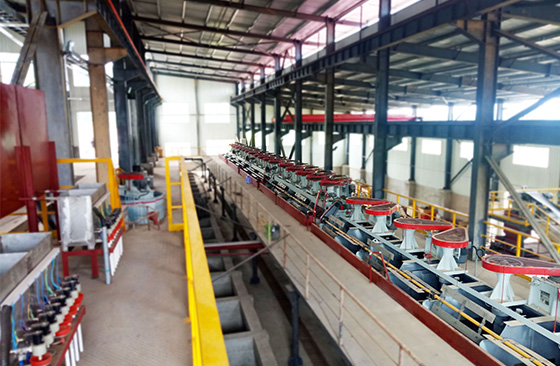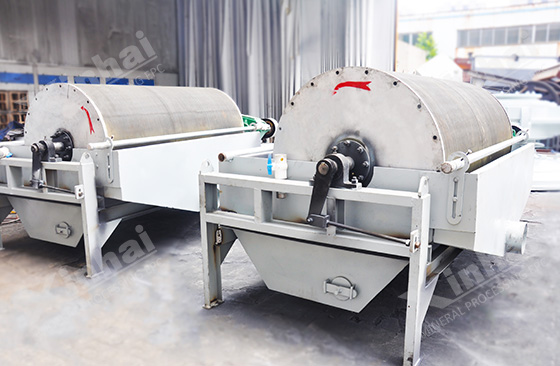There are many types of non-metallic minerals, and many non-metallic minerals have complex chemical compositions. Since most non-metallic minerals can fully exert their physical and chemical properties only after separation and purification, technology is needed to select and purify these non-metallic minerals. The following will introduce non-metallic minerals processing and purification technologies from three aspects, namely gravity separation, flotation separation and magnetic separation.
Use the table of contents below to navigate through the guide:
01Non-metallic mineral processing--gravity separation
(1) Jig separation: During jig processing, the medium flow in vertical pulse motion is stratified according to different densities, so the mineral particle groups occupy different positions in height, and the denser mineral groups are located in the lower layer, while the small density particle group is located in the upper layer, thereby achieving the purpose of mineral separation. When using a jig to separating non-metallic minerals, attention should be paid to the feeding of the minerals and the operating requirements of the equipment, which will affect the processing capacity and sorting effect of the equipment.

(jigging equipment)
(2) Heavy media separation: This sorting process is mainly used to separate solid particles with large density differences. In the gravity separation process, water or air with a density lower than the density of the selected solid particles is usually used as the separation medium. Heavy media sorting has strong adaptability and the sorting efficiency and accuracy are higher than other sorting methods. When using heavy media separation, the adjustment of sorting density can be flexibly changed and the range is wide.
(3) Shaking table separation: It is mainly suitable for sorting fine solid particles. The shaking table consists of a bed surface, a frame and a transmission mechanism. The sorting process is mainly the result of the combined effects of the form of the bed bars, the inclination of the bed surface, the asymmetric movement of the bed surface and the transverse flushing of the bed surface. Therefore, it has the advantages of high precision, simple equipment, low operation and production costs.

(shaker gravity separation)
(4) Chute separation: During chute re-separation, the solid particle flow is periodically loosened and compacted under the action of turbulence in the regulating plate area, causing the initial material flow to be stratified according to density, so that light solid particles are located between heavy solid particles. above. The heavy solid particles tend to move toward the lower inner surface of the chute. Under the force of the rising water flow and the component force of gravity along the chute, the light solid particles move upward along the chute, while the heavy solid particles move in the opposite direction, thereby achieving the separation of minerals. .
02Non-metallic mineral processing--flotation separation
The flotation process mainly includes three procedures: pulp mixing, chemical mixing and bubble mixing. Slurry adjustment is to adjust the concentration of the slurry before flotation to meet the requirements of the flotation process. It is an important operation in the flotation process. Pharmaceutical adjustment is the adjustment of chemicals in the flotation process, including improving drug efficacy, rational addition, mixing drugs, and adjusting drug concentration. Bubble adjustment is the adjustment of bubbles generated during flotation. The size, quantity and stability of bubbles have an important impact on flotation. Generally, flotation methods can be divided into two types: forward and reverse flotation. However, when the mineral contains two or more useful substances, mixed flotation and preferential flotation can be used. In order to improve flotation efficiency, attention should be paid to the factors that affect its effect, such as mineral particle size, slurry concentration, chemical system, slurry temperature and flotation time.

(flotation process)
03Non-metallic mineral processing -- magnetic separation
Magnetic separation is a method that uses the different magnetic properties of minerals to separate minerals in a non-uniform magnetic field. Although magnetic separation is one of the commonly used methods for metallic ores, it is also commonly used for non-metallic minerals, mainly to remove magnetic impurities in non-metallic minerals, thereby achieving the purpose of selecting non-metallic minerals. Magnetic separation occurs in the magnetic separator. When the minerals enter the separation space of the magnetic separator, the magnetic minerals are magnetized and are affected by the magnetic force. They overcome the mechanical force in the opposite direction of the magnetic force and are adsorbed on the cylinder of the magnetic separator. The rotating drum is brought to the ore discharge end, and the magnetic products are discharged. Since non-magnetic mineral particles are not affected by magnetic force, they are discharged from the ore discharge port of the bottom box of the magnetic separator under the action of mechanical force, which is a non-magnetic product.

(Magnetic separation equipment)
The above content is the gravity separation, flotation and magnetic separation process technology for non-metallic mineral processing. When selecting specific process technology, mineral processing test analysis should be carried out. Determining the properties of the ore, combined with the mineral processing requirements, formulating a reasonable mineral processing process and arranging efficient mineral processing equipment can improve the mineral processing efficiency and concentrate recovery rate of non-metallic minerals, thereby improving the overall plant efficiency of mineral processing.


 marketing@ytxinhai.com
marketing@ytxinhai.com  0086 13810327080
0086 13810327080 






































































































 CHAT
CHAT MESSAGE
MESSAGE






